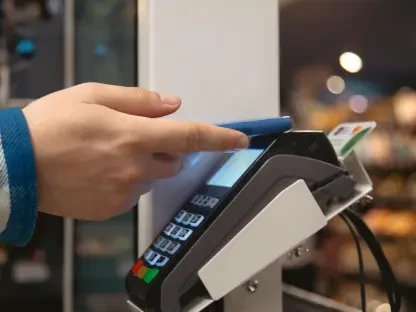The State of South African Retail in a Phygital Pivot
Digital discovery has become the front door of South African retail, and the door now swings both ways as shoppers move from screen to store and back again without friction or pause. The shift is structural, not seasonal, as consumers treat online channels as the place where choices are shaped, prices are compared, and payment options are vetted long before a cart is pushed or a basket is tapped.
Market momentum confirms the reconfiguration. Online sales are set to exceed R130 billion by year-end, approaching 10% of national retail while offline volumes stagnate. Grocery, fashion, electronics, health and beauty, home, automotive and tires, and specialty are all touched by the same gravity: smartphone penetration, cheaper data, social and commerce convergence, instant payments, and BNPL. National chains, pure-play e-commerce operators, marketplaces, and payments innovators like PayJustNow are redefining operating models through click-and-collect, ship-from-store, endless aisle, and ubiquitous price comparison, all within a regulatory frame that expects data protection, consumer clarity, and secure payments.
Forces Reshaping the Journey from Discovery to Checkout
Behavioral and Technological Trends Defining Phygital Commerce
Shoppers now begin with a tap: 57% research online before buying in-store, up from 42% in 2022, and digital touchpoints shape store behavior at every turn. Price comparison is constant, with 83% triangulating across apps and 69% checking prices by phone before stepping to the till, yet 75% still prefer physical shops when comparing or buying from multiple retailers.
Priorities are consistent: findability, trusted and varied payment options, and a frictionless checkout. Payments are turning into experience platforms that inspire, guide, and convert with personalized recommendations and flexible terms spanning 3 to 12 months. PayJustNow illustrates the shift from utility to discovery hub, blending trending categories, individualized deals, and seamless repayment into a single path that meets consumers where intent forms and decisions harden.
Market Size, Trajectory, and Performance Indicators
Digital gains endure while brick-and-mortar growth stalls, and the effect on conversion is measurable. Retailers adding BNPL report sales lifts exceeding 130%, not only at peaks but across typical trading weeks. Black Friday underscored the scale: PayJustNow processed R65.3 million, up 103% year over year, across fashion, electronics, tires, and more, while October’s 4.5 million outbound clicks to partners surged 275% as top-of-funnel engagement compounded.
Shopper profiles point to a digital-first consumer in the mid-30s with roughly R1,500 baskets, about 13 purchases, and a predominantly female skew near 75%. Phygital readiness shows up in performance metrics: conversion, average order value, repeat rate, cart abandonment, ROAS, store pickup rate, and payment approval rate—each a lever that ties discovery to decision and fulfillment to loyalty.
Frictions, Gaps, and the Cost of Standing Still
Legacy stacks and fragmented data limit unified commerce and throttle personalization. Weak product data and clumsy search bury inventory that should sell, while thin inventory visibility and rigid fulfillment models frustrate shoppers who expect options—delivery, pickup, or ship-from-store—on their terms.
Checkout is often the pressure point. Limited payment choice, low approval rates, fraud, and false declines drain intent and erode trust. Affordability constraints demand flexible terms that protect consumers, and operations need retooling: store associate enablement, clean returns orchestration, and dependable last-mile delivery. The fixes are clear—API-first or composable architectures, unified product-customer-order data with real-time stock, varied secure payments including cards, BNPL, wallets, and instant pay, tighter fraud controls, checkout UX tuned for speed, price and promotion parity, QR and app-based bridges to store, and consistent training that turns staff into digital guides.
Rules, Rails, and Risk: The Regulatory Environment
Compliance remains a design constraint and a source of trust. POPIA sets a high bar for consent, minimization, and security, while consumer protection rules demand clear disclosures, reliable returns and warranties, and transparent pricing and fees. Payments expectations are anchored by SARB and PASA guidance, SCA and 3D Secure, and PCI DSS standards that safeguard card data.
BNPL heightens responsibility: affordability checks, fair disclosures, and collections practices aligned with the National Credit framework where applicable. Where payments intersect with AML and KYC, FICA obligations apply, alongside robust fraud prevention and cyber risk controls. The practical outcome is compliance-by-design—vendor due diligence, disciplined data handling, and tested incident response woven into product and operations from the outset.
Where the Market Goes Next
Phygital is normal, not novel. Stores evolve into service and fulfillment hubs as click-and-collect and curbside expand, and payments become experience layers with interoperable wallets, instant rails like PayShap, and personalized BNPL durations that flex to context and risk.
AI-native commerce pushes search, merchandising, and offers to feel intuitive and timely across channels, while shoppable media, creator-led discovery, and in-app checkout draw more journeys into social streams. Data becomes a durable edge as first-party strategies, identity graphs, and privacy-safe personalization replace blunt retargeting. Competitive lines blur as marketplaces compete with retailers and fintech discovery platforms become traffic engines, all shaped by affordability pressures, energy reliability, logistics capacity, and global crosswinds.
Conclusion and Strategic Recommendations
The evidence pointed to a durable shift: digital discovery anchored the journey while stores remained vital yet digitally mediated. Winning moves combined discovery, comparison, payments, and fulfillment in one flow; invested in product data quality, strong site and app search, and real-time inventory; expanded secure payment choice with higher approval rates and tighter fraud controls; and built first-party data with consent to power responsible AI-led personalization. Retailers that tied online to store with unified identity, offers, and checkout, tracked phygital KPIs, and partnered with experience-led payment platforms captured incremental demand and loyalty. Those that delayed ceded visibility at discovery and lost conversion at payment, while those that acted turned structural change into lasting advantage.









